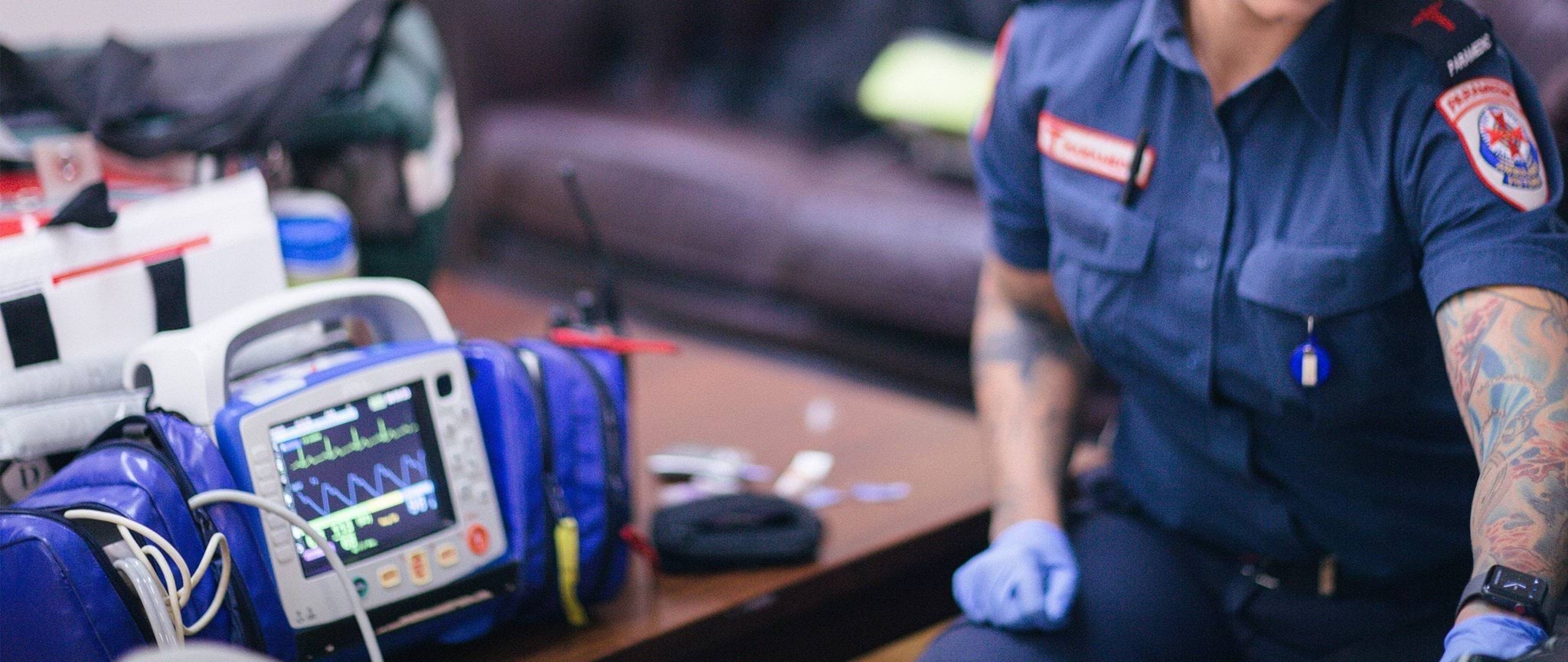Research
Ambulance Victoria (AV) offers a unique opportunity to undertake research in the pre-hospital environment. Clinical and operational research can be conducted with the aim of improving patient care and outcomes.
The Centre for Research and Evaluation is responsible for:
- Research governance and promotion.
- In house research and research program development.
- Research liaison, advice and coordination.
- Establishment of research partnerships.
- Securing research funding.
- Project evaluation and analysis.
- Development of clinical performance indicators.
- Provision of data to Clinical Quality Registries and Clinical Trials.
Research applications
AV supports research where the benefits outweigh the associated risks.
Participation in research projects is governed though our research governance process.
All applications must comply with the Research Application Guidelines.
Individuals developing research proposals should contact the Centre to discuss their proposed project. This will assist in research design and help to reduce delays in the application process.
All project applications will be reviewed by the Ambulance Victoria Research Committee. In some circumstances the Ambulance Victoria Executive will reviewed applications. Comments and opinions from external sources may also be considered. The Research Committee meets quarterly. Committee meeting dates can be obtained by emailing the Centre for Research and Evaluation at ResearchGovernance@ambulance.vic.gov.au.
Research Publications
Peer reviewed research publications
Ambulance Victoria's Centre for Research and Evaluation is an international leader in pre-hospital emergency care, health services and resuscitation research.
Clinical quality registries
Clinical quality registries monitor and report on the appropriateness and effectiveness of health care.
Ambulance Victoria is a key data contributor to several Australian Clinical Quality Registries. These include:
- The Turning Point Alcohol and Drug Related Ambulance Attendances registry.
- The Victorian State Trauma Registry.
- The Victorian Cardiac Outcomes Registry.
- The Australian Resuscitation Outcomes Consortium (Aus-ROC) Epistry.
- The Australian Stroke Clinical Registry.
- The Unexplained Cardiac Death Project.
Victorian Ambulance Cardiac Arrest Registry
The Victorian Ambulance Cardiac Arrest Registry (VACAR) is a quality assurance initiative. It captures data on all out-of-hospital cardiac arrests attended by emergency medical services in Victoria. The registry commenced in October 1999.
VACAR data is used to monitor response intervals, treatment protocols and cardiac arrest patient outcomes. Ambulance Victoria clinical and operational data is supplemented with outcome data from Victorian hospitals and the Victorian Registry of Births, Deaths, and Marriages.
In 2010, the VACAR commenced interviews with cardiac arrest survivors 12 months after cardiac arrest to follow up on their health-related quality of life.
The VACAR is one of the largest pre-hospital cardiac arrest registries in the world and supports a significant research program into the care of cardiac arrest patients.
Victorian Ambulance STEMI Quality Initiative
The Victorian Ambulance STEMI Quality Initiative (VASQI) is a clinical quality registry established in 2018 to co-ordinate the systematic and ongoing monitoring of STEMI patients.
Its purpose is to improve the quality of care delivered to STEMI patients by paramedics. The registry provides a quality feedback loop to stakeholders, including paramedics, educators and team managers.
Clinical trials
Clinical trials help us refine and optimise our clinical practice guidelines and procedures.
Trials provide evidence-based insights into the most efficient, safe and effective ways to respond to emergencies.
Updated
